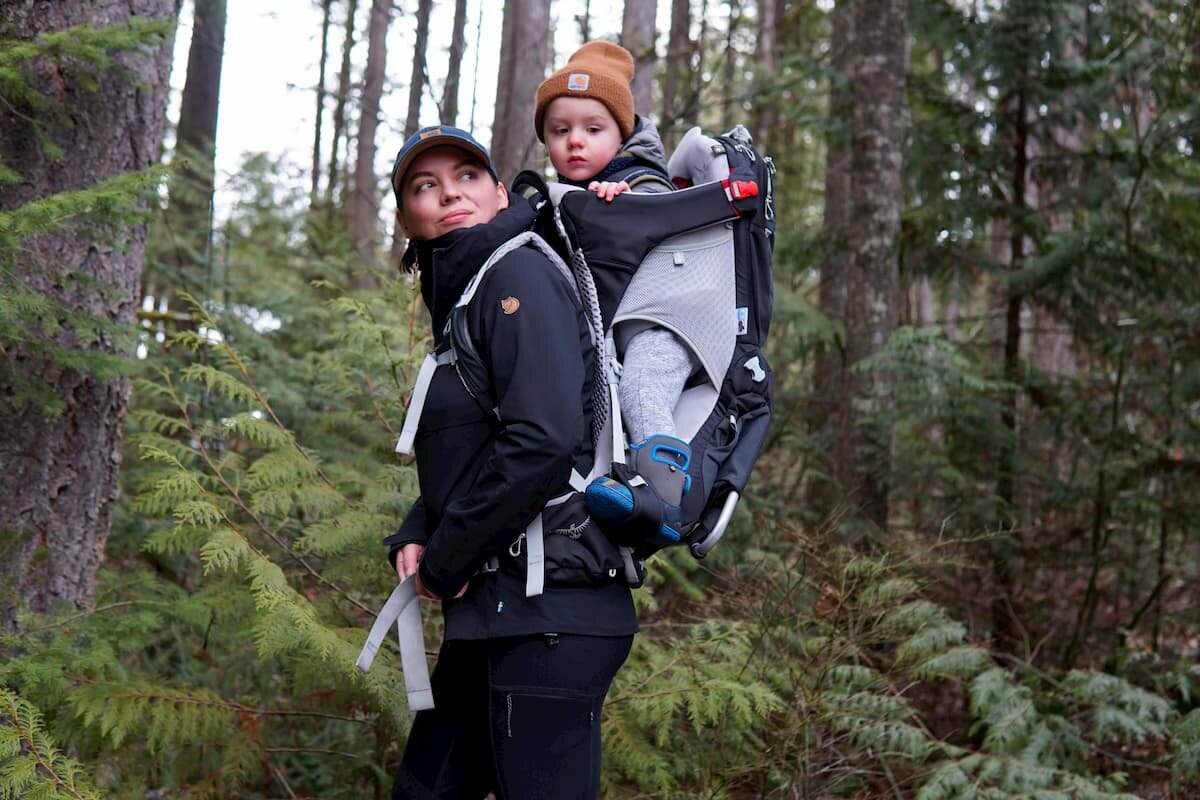How Accurate are Stated Volumes of Backpacking Backpacks?
While testing packs for our Best Backpacking Backpacks guide, we had a hunch that stated manufacturer stated volumes aren’t consistent from brand to brand. We found that we could fit the same gear in a so-called 35 L pack that we could fit in a 55-L pack.
We decided to measure volume objectively across multiple brands. We conclude that most backpacking backpacks have different stated volumes than what can be measured. We suspect that volumes labeled on backpacks are influenced by marketing and giving consumers what they think they want in a pack.
We create reader-supported, objective, independently-selected gear reviews. This story may contain affiliate links, which help fund our website. When you click on the links to purchase gear, we may get a commission, without costing you an extra cent. Thank you for supporting our work and mission of outdoor coverage for every body! Learn more.
Using pinto beans, we measured the volume of the main compartment for the following packs:
| Model | Main Body Claimed Volume | Main Body Measured Volume | Body With Extension Collar Measured Volume |
|---|---|---|---|
| Hyperlite Mountain Gear 2400 Junction | 40 L | 32 L | 36 L |
| Zpacks Arc Blast 55 | 42 L | 34 L | 34 L |
| Six Moon Designs Swift X | 36 L | 44 L | 50 L |
| ULA Equipment Circuit | 40 L | 38 L | 44 L |
| Gossamer Gear Kumo 36 | 28 L | 29 L | 32 L |
| Gossamer Gear Mariposa 60 | 36 L | 42 L | 50 L |
Methodology
We used pinto beans to fill the main compartment of packs. For roll-top packs, we filled until we could roll the pack 3 times. The same person measured all the packs on the same day.
What about ASTM volume measurements?
Across industries, ASTM standards use scientific methods to compare products across brands. They use trusted methodology so that consumers, retailers, and manufacturers can make informed decisions.
Although ASTM does have a standard test measurement for the measurement of backpack capacity, there is no regulatory requirement that any brand uses the measurement in their reporting. Additionally, at this time, no retailer demands that different brands use the same measurement methodology.
ASTM charges brands a fee to do volume testing, which is a burdensome cost, especially for smaller cottage backpack companies.
What’s the difference between your methodology and ASTM?
ASTM measures capacity with 20-mm spheres slightly smaller than ping pong balls. The spheres are then squished in a volume canister to remove “dead space.”
Our methodology uses pinto beans as measured with cups.
The spheres that ASTM uses do not weigh as much per cubic inch as pinto beans, so will not stretch the fabric as much as the beans. Likewise, pinto beans fill in “dead space” more than spheres. As a result, measuring a pack using pinto beans will yield a higher volume than measuring the same pack using spheres.
Another difference between our methodology and ASTM is the ease of use and cost associated with running the test. Anyone can replicate our methodology with pinto beans and without special machinery. They’re even still edible after testing (multi-use item!).
Our main goal was to use the same volume measuring methodology across different brands.
Can you trust manufacture's stated volumes on backpacks?
By measuring volume objectively across multiple outdoor brands, we conclude that most backpacking backpacks have different stated volumes than what can be measured.
We suspect that volumes labeled on backpacks are influenced by marketing.
Because many backpackers have a preconceived notion of the ideal volume for backpacking, they shop for backpacks with that number in mind. Brands advertise their pack volume based on what consumers think they want in a pack.
Why You Should Trust Us & about the authors
Mike Unger left his high-stress corporate job to thru hike the Pacific Crest Trail in 2006. That experience forever changed him, and he purposefully re-arranged his life to allow for as much adventuring as possible. Today, he’s closing in on 28,000 miles on North American long trails and is one of a handful of people who is Double Triple Crowner, having hiked the Appalachian Trail, Pacific Crest, and Continental Divide Trails each twice. He’s also picked up another passion along the way: long-distance bike packing, including the 1,850 mile Pacific Coast route. When he’s not hiking or biking, he’s probably planning his next trip and/or researching gear.
Naomi Hudetz is director of analytics and digital innovation and leads business strategy and revenue operations for Treeline Review. She brings decades of private sector experience in project management, budget and pricing projection, and long-term business vision, strategy, and goals.
Naomi left her corporate career to pursue her passion for the outdoors. She received the Triple Crown award for hiking for completing the Appalachian Trail, Pacific Crest, and Continental Divide Trail and has hiked numerous other distance routes including the Great Divide Trail across the Canadian Rockies (twice), Grand Enchantment Trail, Pacific Northwest Trail, the Arizona Trail, (most of) the Idaho Centennial Trail, the first known thru-hike of the Blue Mountains Trail, and the Oregon Desert Trail. She serves as Treasurer of the American Long Distance Hiking Association-West and is based in White Salmon, Washington.




